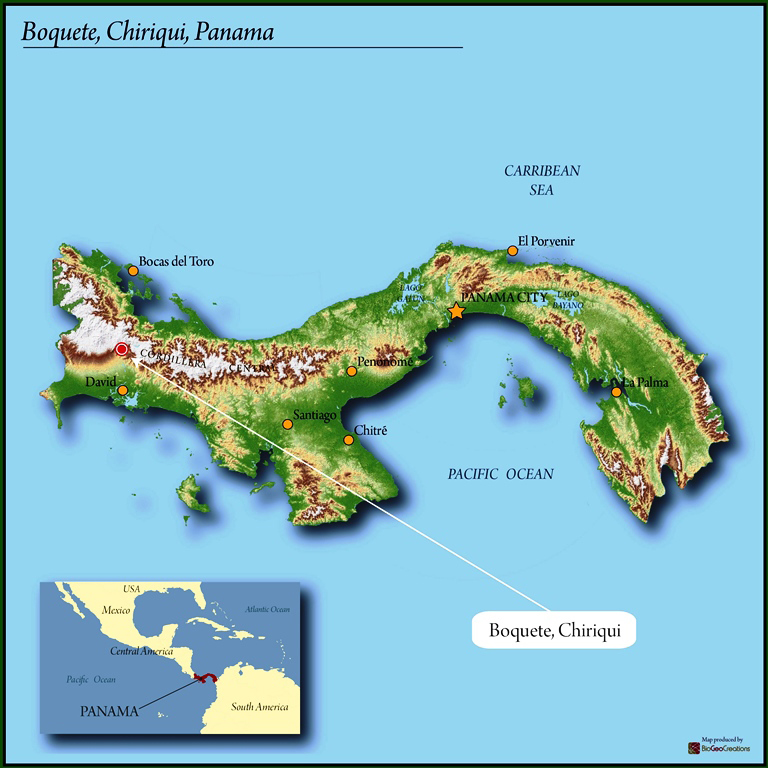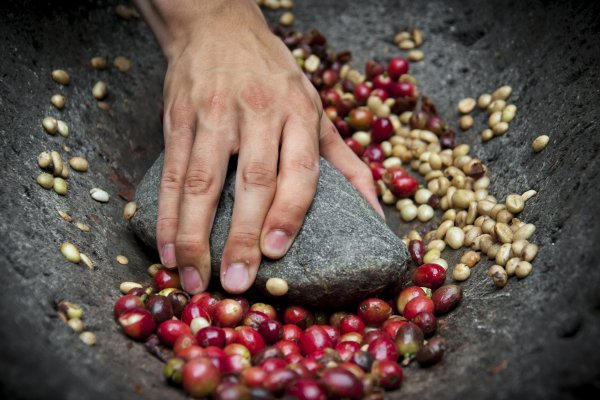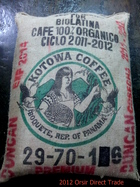About BoP Panamanian Fine Coffee Association Coffee producing countries brief introduction to Panama Panama
For professional baristas, please follow the coffee workshop (Wechat official account cafe_style)
About BoP Panamanian boutique coffee association
On June 12, 2017, China and Pakistan established diplomatic relations.
Basic information
English name: Republic of Panama
English: The Republic of Panama
Abbreviation: Panama
Continent: North America
Country code: PAN
Area: 75517 square kilometers
Population: 3.93 million (2015)
Official language: Spanish
Currencies: us dollar, Barboa
Capital: Panama City, Panama City
GDP: $55.19 billion (2016)
Per capita GDP:13600 USD (2016)

History.
It became a Spanish colony in 1501. He became independent in 1821 and joined the Republic of Greater Columbia. In 1831, after the disintegration of the Republic of Great Columbia, it became a province of the Republic of New Granada (later known as Colombia). Independence, 1903.
Brief introduction of coffee producing countries: Panama Panama
Position
Between latitude 7 °to 10 °north and longitude 77 °to 83 °west. It is located on the isthmus of Panama in Central America, bordering Colombia to the east, the Pacific Ocean to the south, Costa Rica to the west and the Caribbean Sea to the north. The territory is S-shaped to connect North and South America, and the Panama Canal connects the Atlantic and Pacific oceans from north to south. It is known as the "bridge of the world".
Economics
The Panama Canal Zone, the regional financial center, the Cologne Free Trade Zone and tourism are the four pillars of the economy. Among them, the Panama Canal is responsible for 5% of the world's trade and freight, and the Cologne Free Trade Zone is the second largest free trade area in the world after Hong Kong.
The historical origin of China
In 1854, the first batch of Chinese arrived in Panama to participate in railway construction. According to statistics, there are about 200000 Chinese and overseas Chinese in Panama, making it one of the largest overseas Chinese communities in Latin America.
Brief introduction of coffee producing countries: Panama Panama
Topography
Mountainous, Balu Volcano is the highest peak, 3475 meters above sea level.
Climatic change
Near the equator, tropical maritime climate, the annual average temperature is 23-27 ℃. There are two dry and wet seasons, the rainy season is from May to December, and the average annual rainfall is 1500-2500mm.
Brief introduction of coffee producing countries: Panama Panama
Chiriqui, Chiriki province
Coffee country profile: Panama PanamaBoquete Coffee country profile: Panama Panama Renacimiento
Coffee history
In the early 19th century, a retired British navy colonel began to grow coffee in the Bockett Valley. Later, the colonists introduced coffee to the western mountains.
Main producing areas
Chiriki is the main coffee producing area in Panama. Boquete, Volcan and Renacimiento are the three most well-known producing areas.
(related blog post: Panamanian boutique coffee producing area: Chiriki Bockett)
Harvest season
December to March
Processing mode
Many kinds of things coexist. Washing, drying and honey treatment.

Brief introduction of coffee producing countries: Panama Panama
Main varieties
Rosa, Katua, Katula, New World, Tippika, Bourbon, Pacamara, Malaggippi
Geisha 、 Catuai 、 caturra 、 Mundo Novo 、 Typica 、 Bourbon 、 Pacamara 、 Maragogype
General situation of coffee
A representative of a coffee-producing country who wins by quality. In the past 20 years, it has become an important producing area in the world of boutique coffee. It is especially famous for the rose summer variety.
On the issue of how to produce high-quality coffee, in addition to suitable natural conditions, high-quality coffee growers have become an important factor.
Most of the earliest coffee growers in Panama were Western immigrants, most of them were engineers and managers who once worked for the Panama Canal, while most of their successors had an American university education background and sufficient knowledge reserves. What is particularly important is that most growers have the ability to evaluate coffee products, grade coffee, and even provide roasters with baking advice. There is enough information to bargain with the buyer.
Brief introduction of coffee producing countries: Panama Panama
Coffee competition
Panama did not join the COE competition, but held its own "Best Panama", Best of Panama, or BoP National Cup test. BoP is organized by the Panamanian boutique coffee association SCAP and has been held for 21 years. Excellent participating beans participate in online auctions, with high prices from time to time.
In 2013, a batch of beans from a well-known estate set a high price of $230 per pound.
2017 Best Panamanian bidding Conference Panamanian Catova Manor Duncan Land Rose Summer Coffee batch
The Kotowa family has five estates, and the two most famous estates are Duncan-Duncan and Tang he-Don K. in fact, these two estates are located on both sides of the mountain mausoleum line, the two sides of the micro-climate changes greatly, which is reflected in the performance of coffee flavor: Duncan is a planting farm, her coffee flavor presents a variety of fruits, obvious floral aroma, delicate spices sweet smell.
The founder of the manor, McIntyre, who was originally Canadian, had a very prominent political status in his hometown, but had a strong desire for a busy and busy life. One day in 1918, he read a report about Pocket in Panama in Central America. The report details that there is a secret that is cool all the year round next to the mysterious volcanic slope. So his curiosity drove him to Poquet. Unexpectedly, he fell in love with the local people of Poquet and the dreamy valley here, so McIntyre decided to settle down here. Up to now, the Alexander family, which has experienced four generations, has grown coffee in the traditional way and is proud of the boutique coffee they have planted with their heart. Ricardo Koyner is the current manor operator.
Catova Manor is located in the Pokuit producing area of Panama, 1700-1850 meters above sea level. The manor has a strong social and environmental awareness, in order to ensure a clean, safe and sustainable environment, the manor uses traditional concepts but the latest technology to grow and handle coffee. Therefore, 500 hectares of virgin forest is specially reserved as a wildlife reserve. There are mainly five planting areas in the manor, which are Finca Kotowa Duncan, Finca Kotowa Don K, Finca Kotowa Rio Cristal, Finca Kotowa Tradicional and Las Brujas. One of the growing areas in the past two years, Finca Kotowa Las Brujas, is also a very good area that has performed very well in the best Panama competition in recent years. In the harvest season, Katowa Manor chooses to plant red coffee fruit and treat it with the local clear and cool mountain spring water. Under the concept of environmental protection, they use only half a liter of water per pound of coffee, which saves about 10 to 20 litres compared with other treatment plants. The treated pulp and waste water are also reused as organic fertilizers. Finally, in the cold and dry climate of 1700 meters, it dries slowly and naturally.
In fact, behind the legends of Kotowa Don K, Duncan and Las Brujas, there is an out-and-out coffee man-Ricardo Koyner. He inherited the coffee garden founded by his mother's grandfather, Alexandar Duncan, in 1917, and the washing plant built by his grandfather, Don K. However, Panamanian coffee was still unknown at that time, and not only were the Rosa coffee trees waiting to be discovered, but many high-quality beans were innocently involved in the most famous coffee fraud in history disguised as Kona of Hawaii in the United States in the 1990s. At the same time, the price of coffee futures in New York fell year after year after the end of the Cold War, and the prospect of running a coffee farm at that time was actually very bad. However, Ricardo, who has a university degree in economics, knows that only by producing the highest quality raw beans can Kotowa Manor get rid of the shackles of futures prices and have the basis for sustainable operation and even carry forward, so he embarked on the road of fine coffee.
At that time, Ricardo and a group of excellent Panamanian coffee owners, such as Wilford of Elida Manor, Francisco of Don Pachi Manor, Daniel of Esmeralda Manor and Rachel siblings, first launched the Panamanian Coffee Association (SCAP) to share and learn about planting and processing techniques, and then held the BOP competition. In just a few years, it attracted the attention of many boutique coffee lovers, and then the dazzling Rose Summer Coffee made its debut and became famous all over the world.
Not only is this not a fluke at all, it happens to be the result of silent efforts and open-minded sharing and learning. As the core and leading coffee garden, Kotowa soon received Rosa seeds from Esmeralda and put into the ranks of Rosa coffee production and technology improvement. For example, the sun treatment, which is not favored by SCAA cup testing experts, has become another dazzling star in just a few years. Today, Ricardo not only delves into the causes of various forms of Rosa rugosa, but also cooperates with UC Davis, a leading agricultural research center in the United States, to explore more secrets about the delicious taste of Rosa Rosa.

2017 Best Panamanian bidding Conference Panamanian Catova Manor Duncan Land Rose Summer Coffee batch
Peach juice, litchi feeling, delicate sweet fragrance
Origin: Western Side of Boquete, El Salto Plateau, Panama
Bean seed: Geisha
Processing plant: Finca Kotowa Duncan
Altitude: 1700meters
Handling method: Natural
Batch: 2017BOP-GN-13
Picking and processing time: 2016 / 10 / 2017
Baking degree: Light
Important Notice :
前街咖啡 FrontStreet Coffee has moved to new addredd:
FrontStreet Coffee Address: 315,Donghua East Road,GuangZhou
Tel:020 38364473
- Prev

2017 Best Panamanian bidding Conference Panamanian Catova Manor Duncan Land Rose Summer Coffee batch
For the exchange of professional baristas, please pay attention to the Coffee Workshop (Wechat cafe_style) 2017 Best Panama auction the Duncan Rose Summer Coffee batch of Duncan Manor in Panama has five estates in the Kotowa family, and the two most famous estates are Duncan-Duncan and Donghe-Don K, which are actually based on the micro climate change on both sides of the hillside.
- Next

About the Mugangoo factory in Mukangu, Kenya
The exchange of professional baristas please follow the coffee workshop (Wechat official account cafe_style) about the Mukangu Mugangoo factory in Kenya, the Mukangu factory and eight other washing stations Ragati,Nguguini,Kiangai,Kibingoti,Thunguri,Kianjege, Chewa and Kibirigwi have formed the Kibirigwi Cooperative. This cooperative is located in Kiini.
Related
- Does Rose Summer choose Blue, Green or Red? Detailed explanation of Rose Summer Coffee plots and Classification in Panamanian Jade Manor
- What is the difference between the origin, producing area, processing plant, cooperative and manor of coffee beans?
- How fine does the espresso powder fit? how to grind the espresso?
- Sca coffee roasting degree color card coffee roasting degree 8 roasting color values what do you mean?
- The practice of lattes: how to make lattes at home
- Introduction to Indonesian Fine Coffee beans-- Java Coffee producing area of Indonesian Arabica Coffee
- How much will the flavor of light and medium roasted rose summer be expressed? What baking level is rose summer suitable for?
- Introduction to the characteristics of washing, sun-drying or wet-planing coffee commonly used in Mantenin, Indonesia
- Price characteristics of Arabica Coffee Bean Starbucks introduction to Manning Coffee Bean Taste producing area Variety Manor
- What is the authentic Yega flavor? What are the flavor characteristics of the really excellent Yejasuffi coffee beans?

